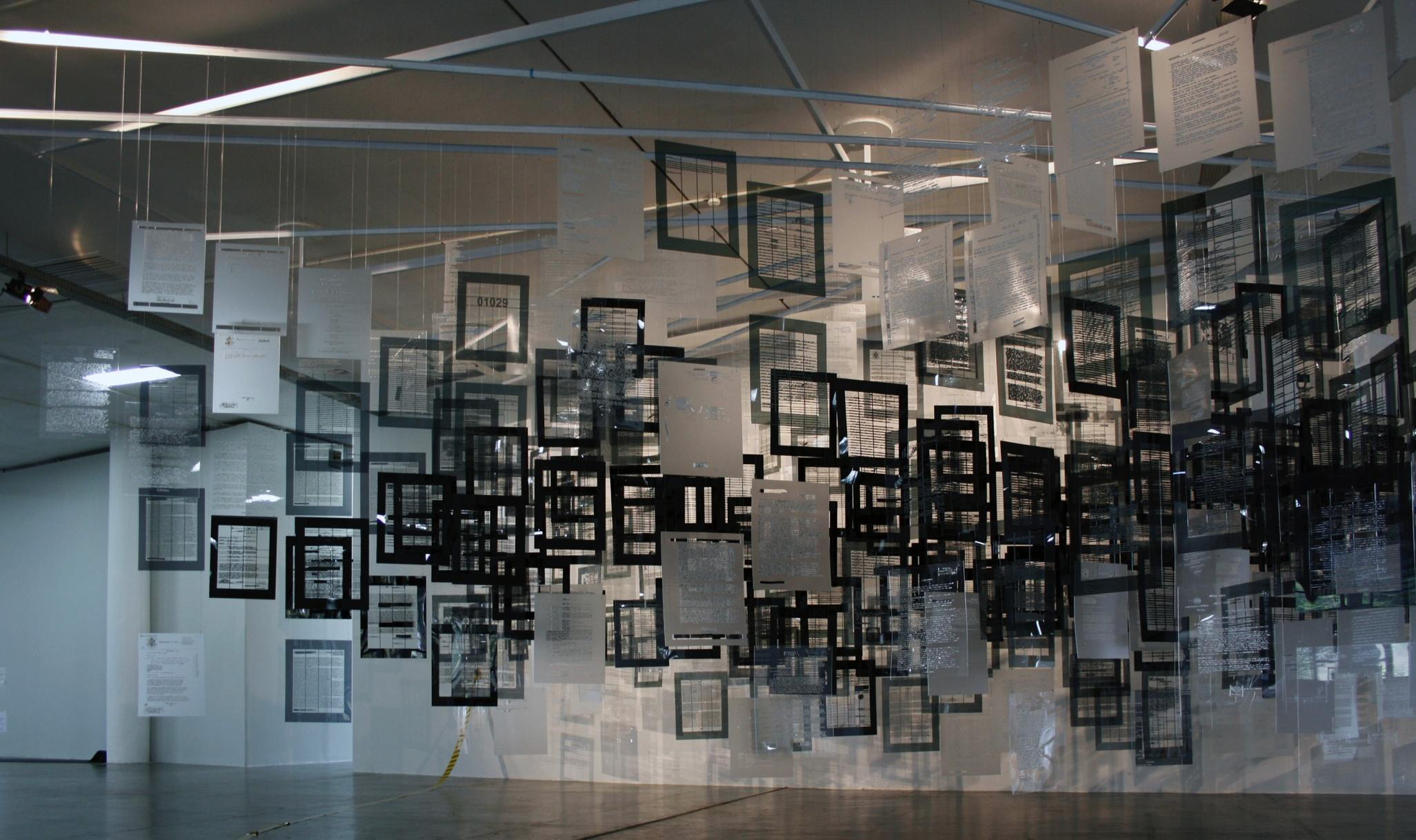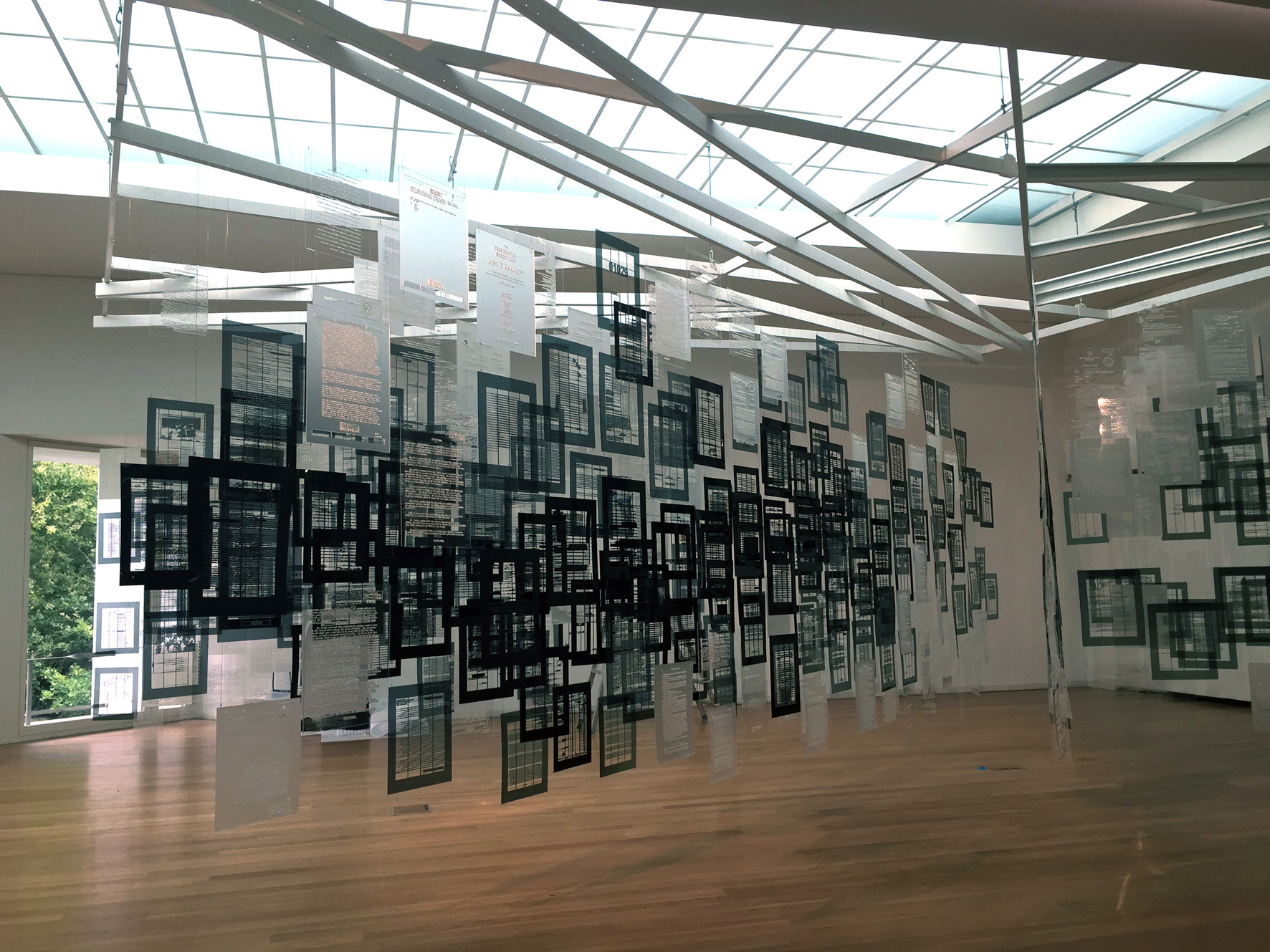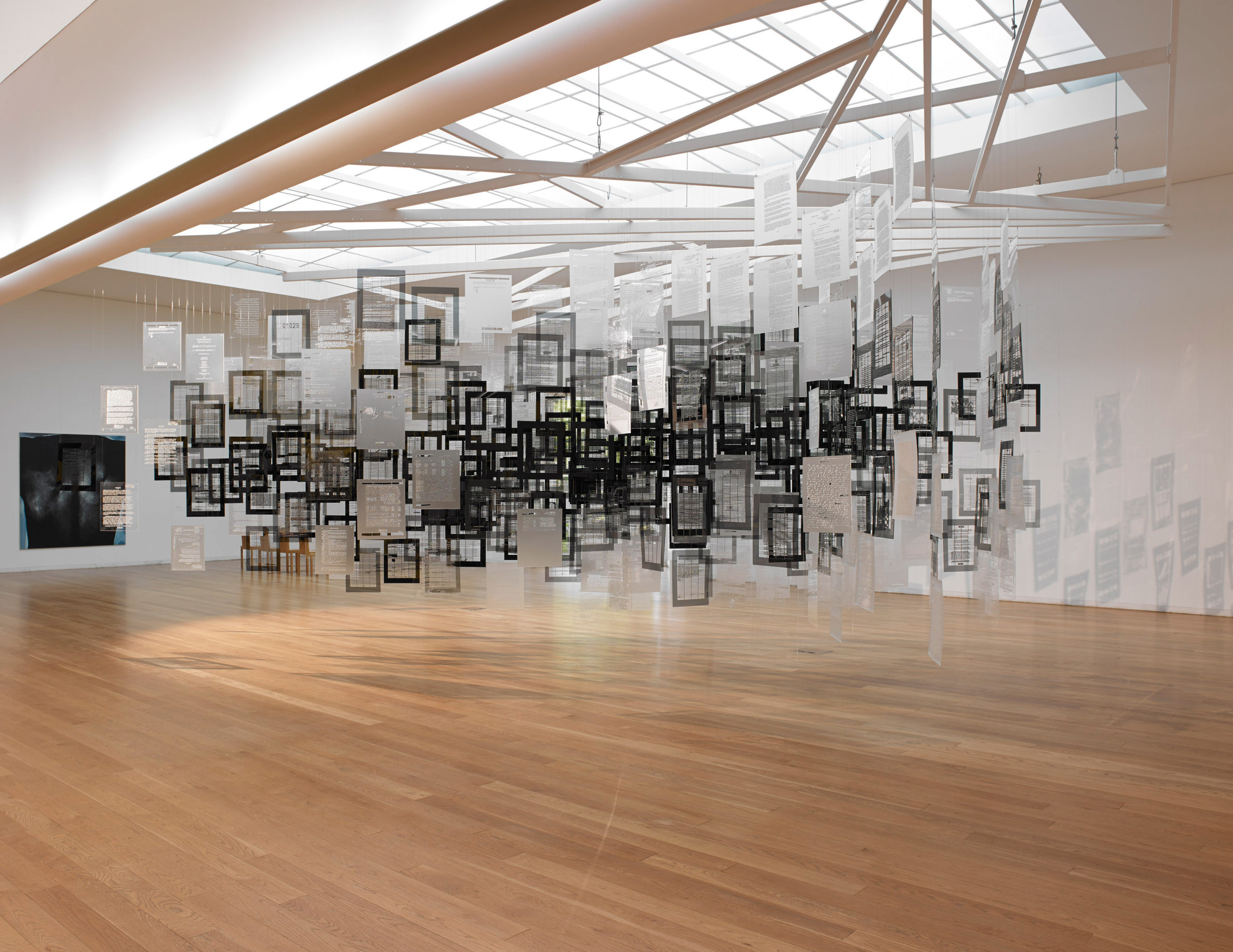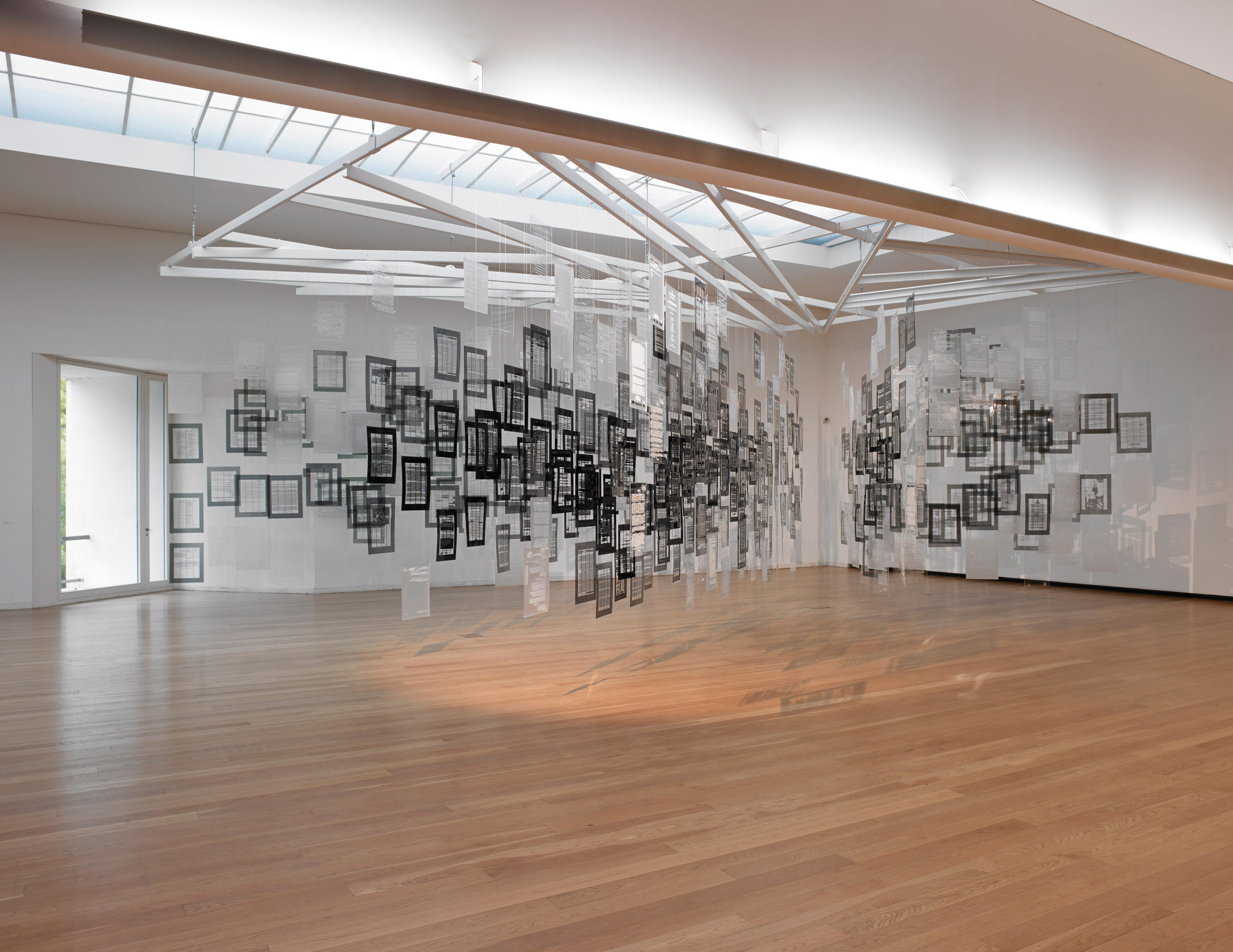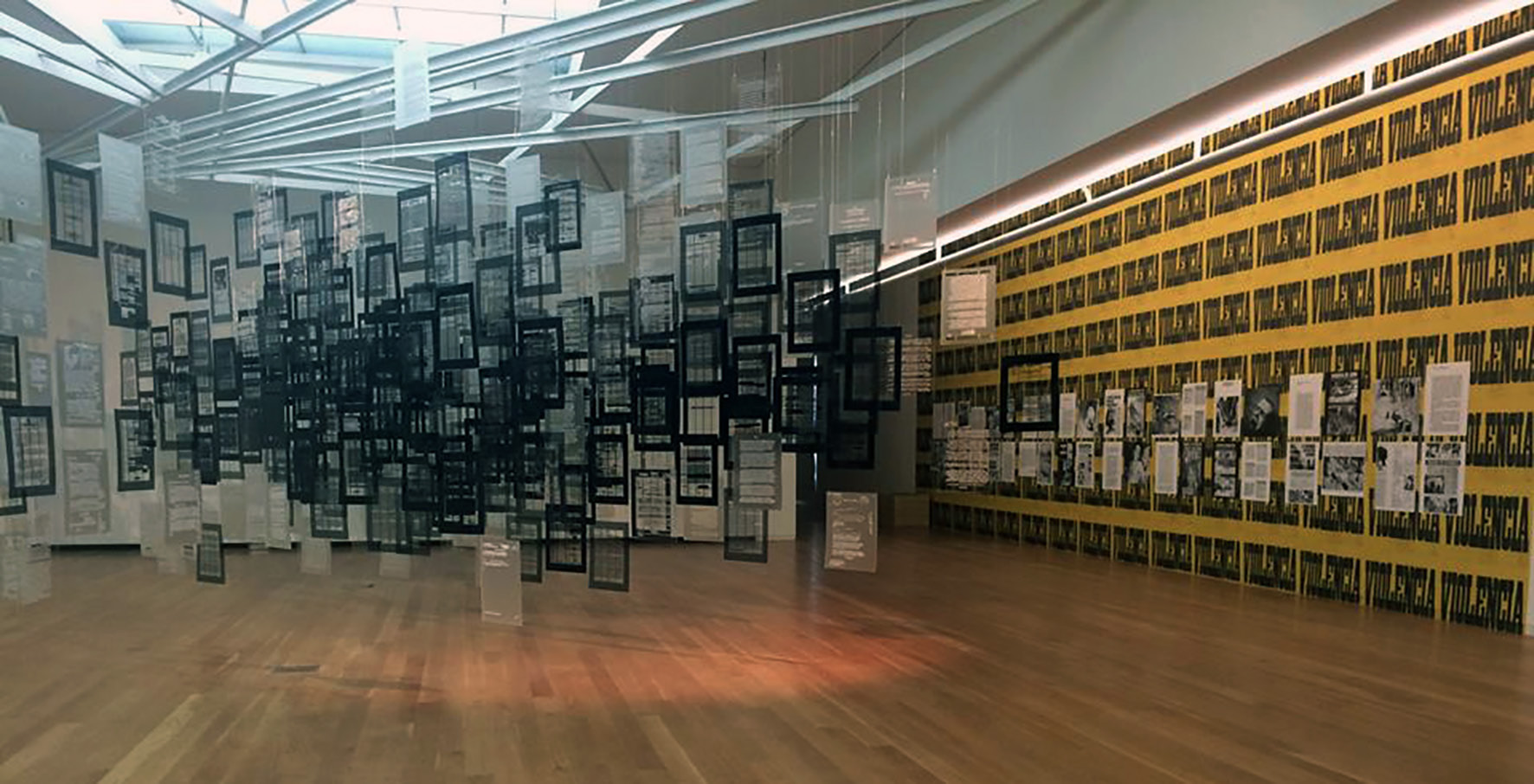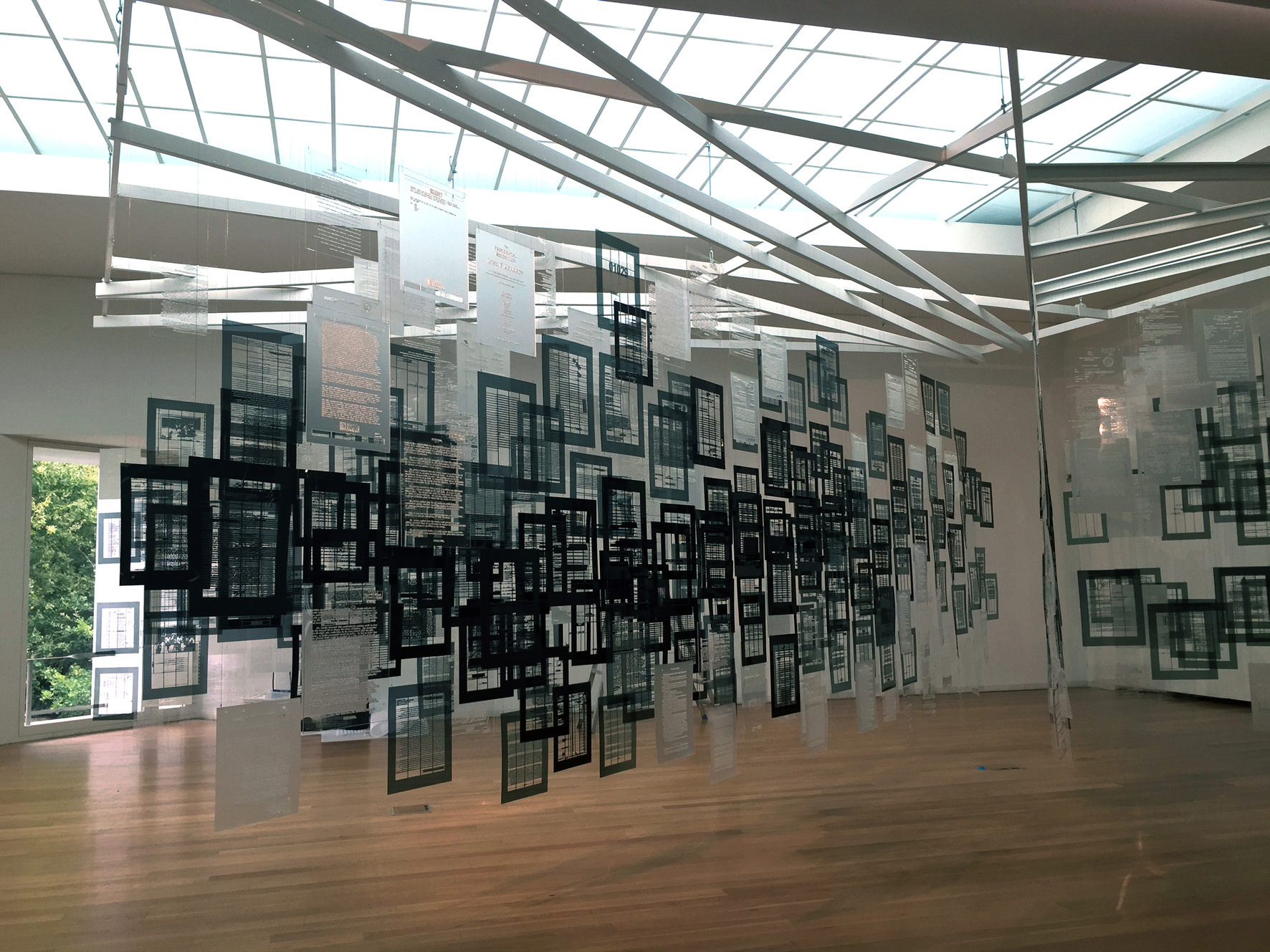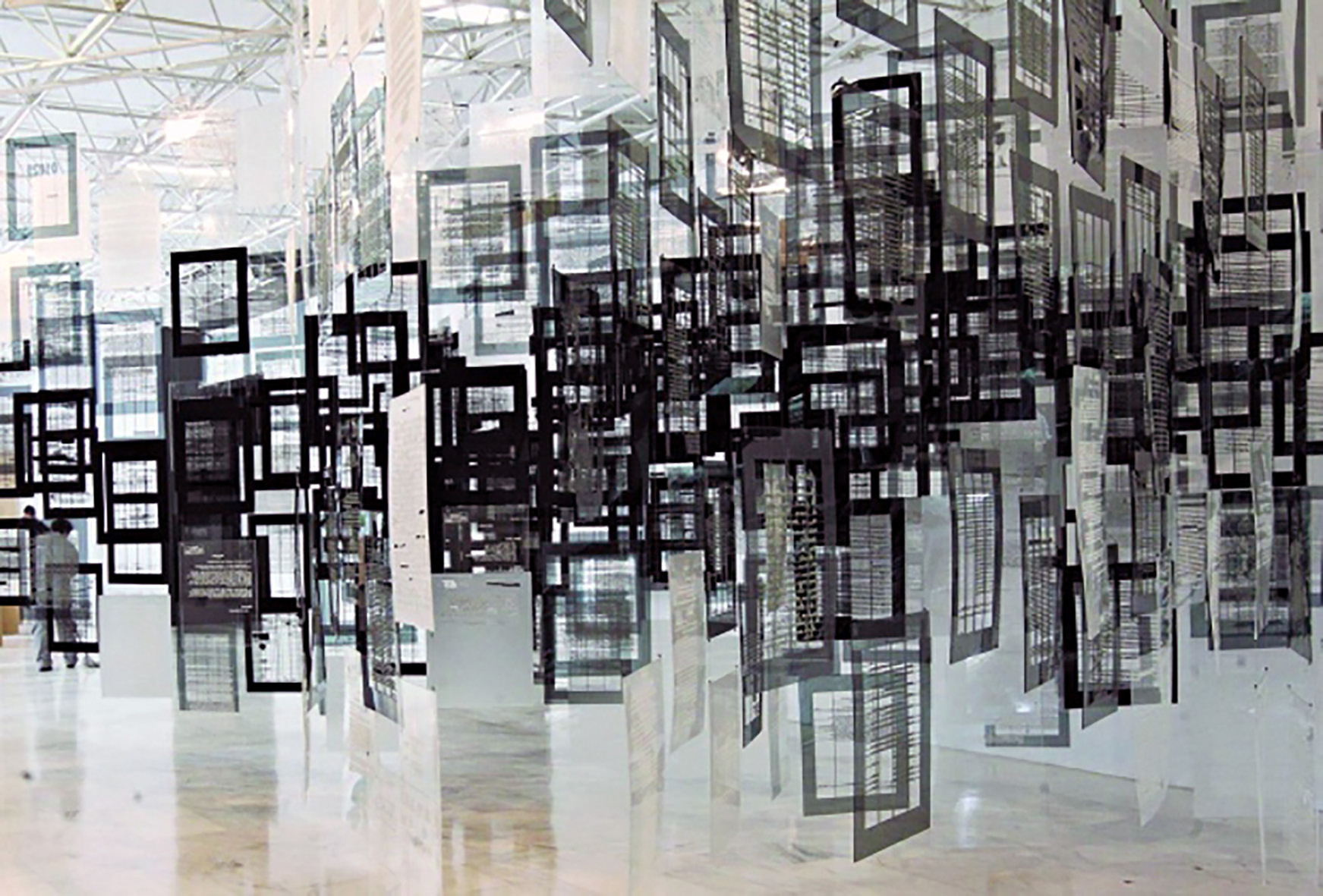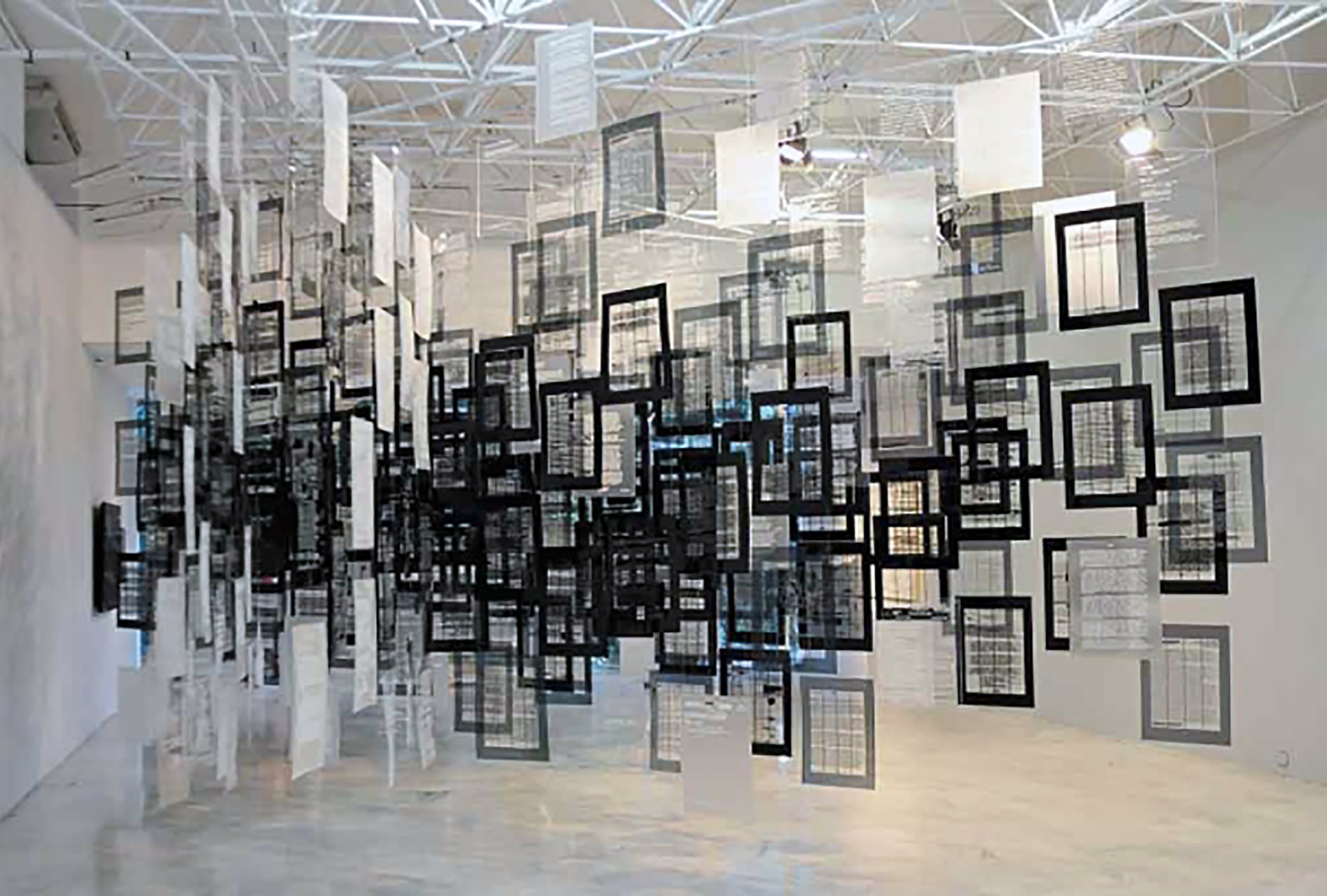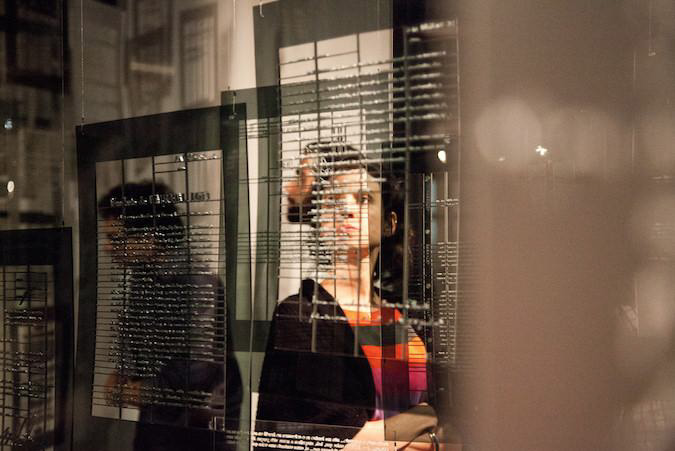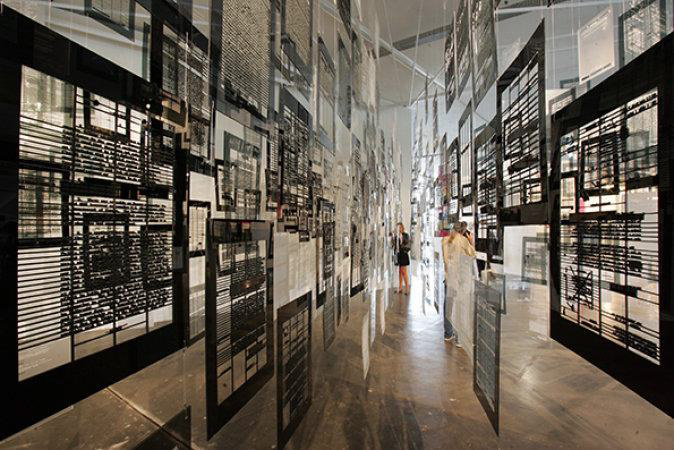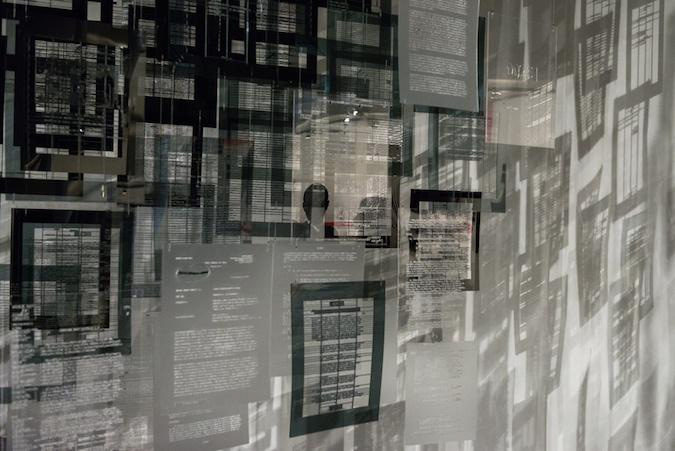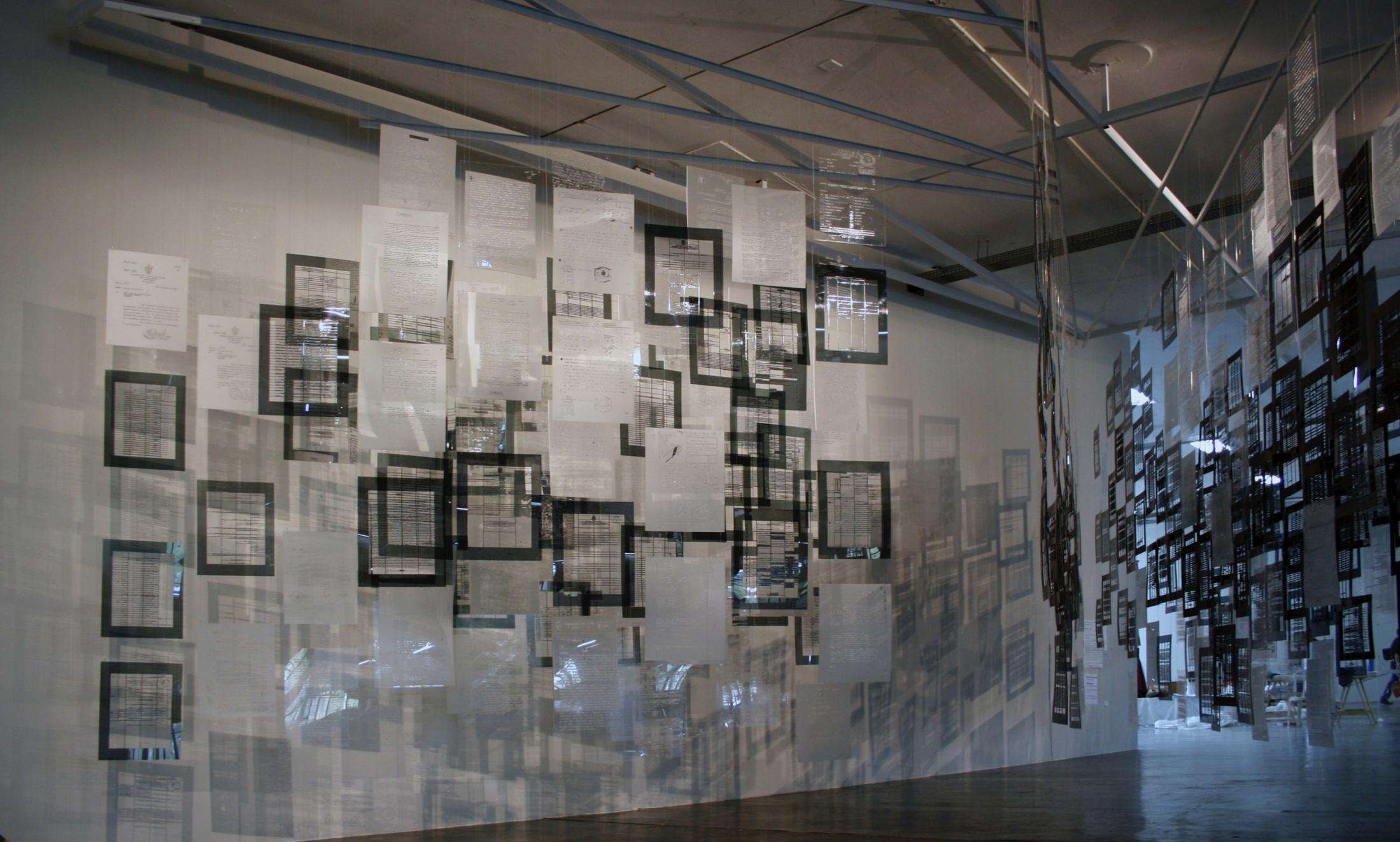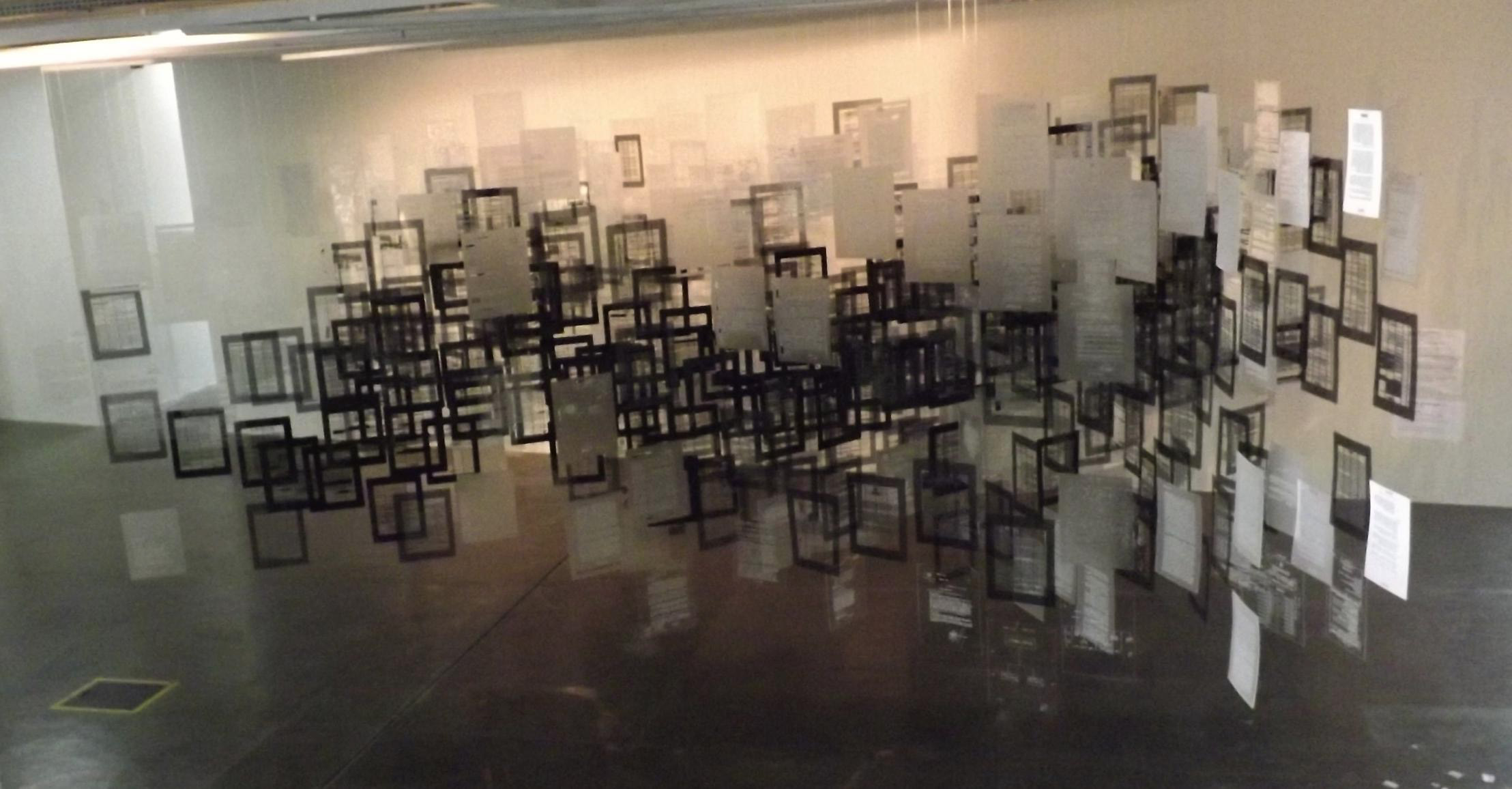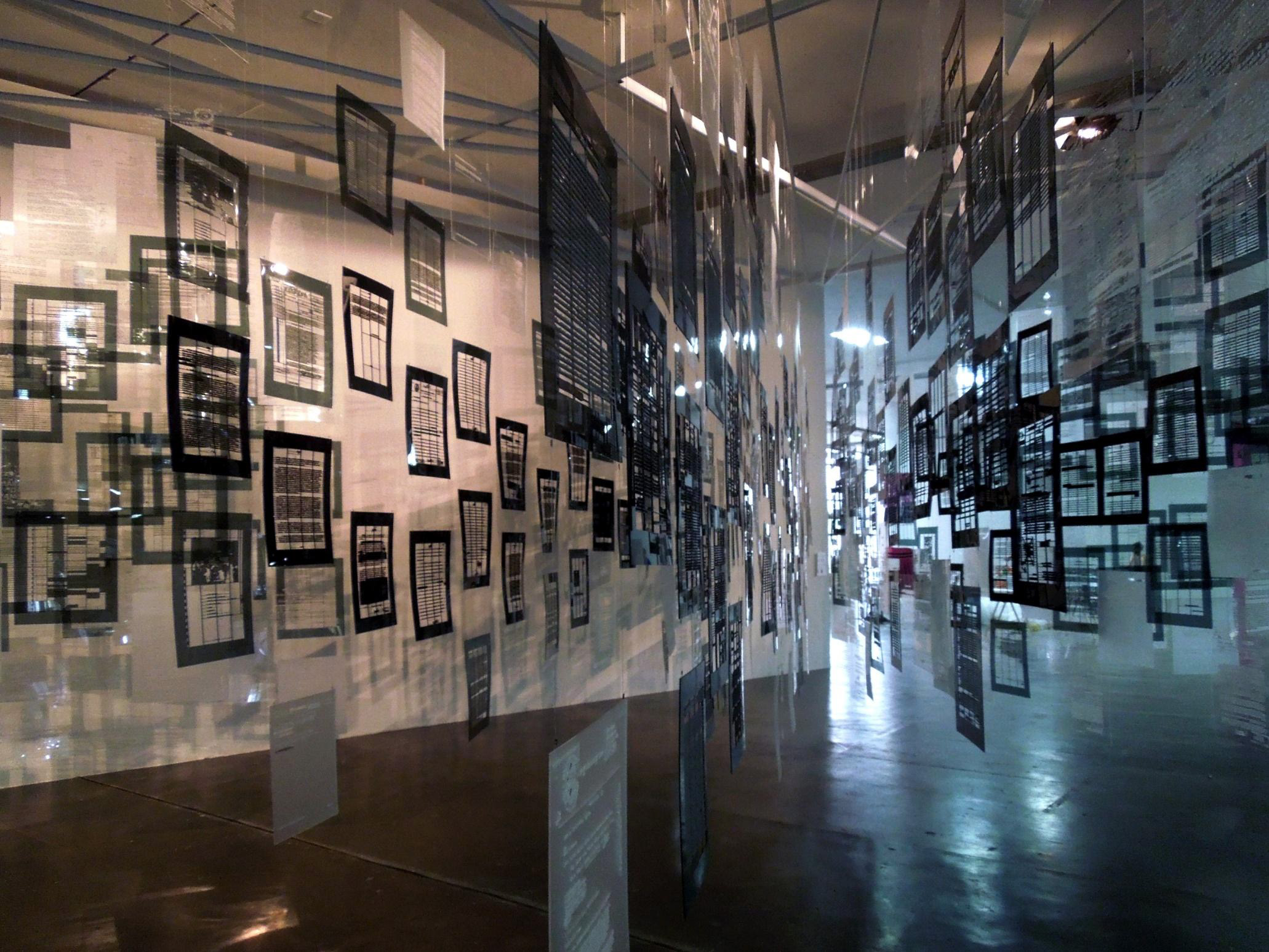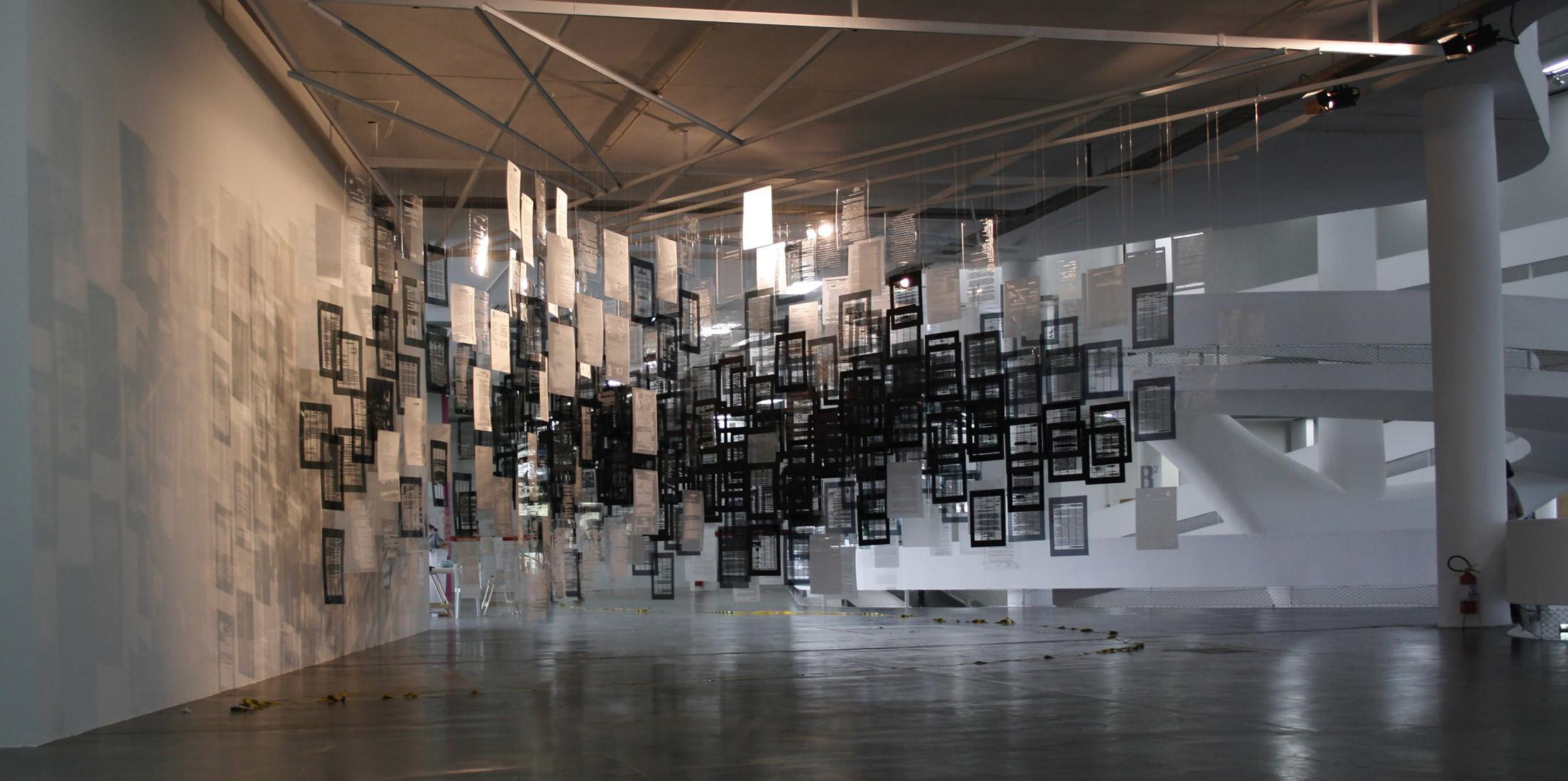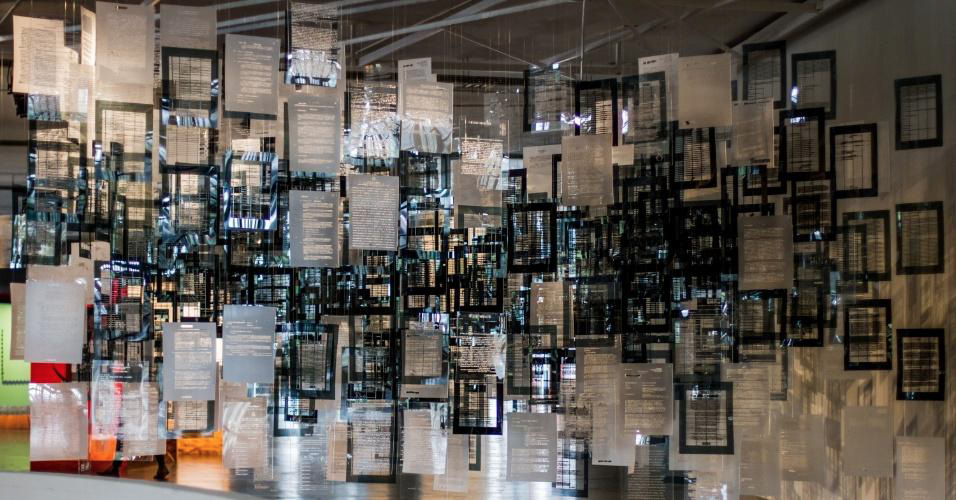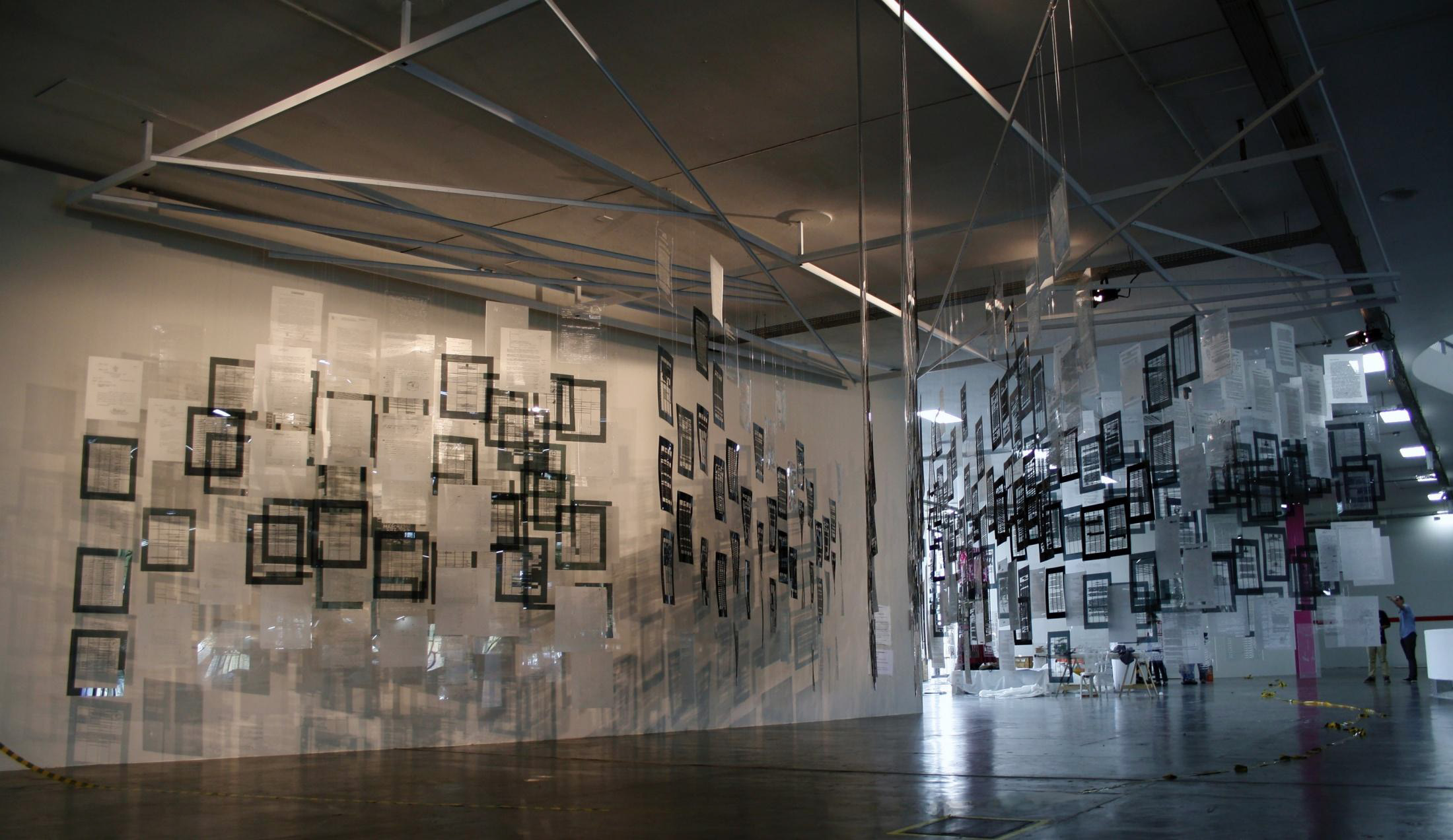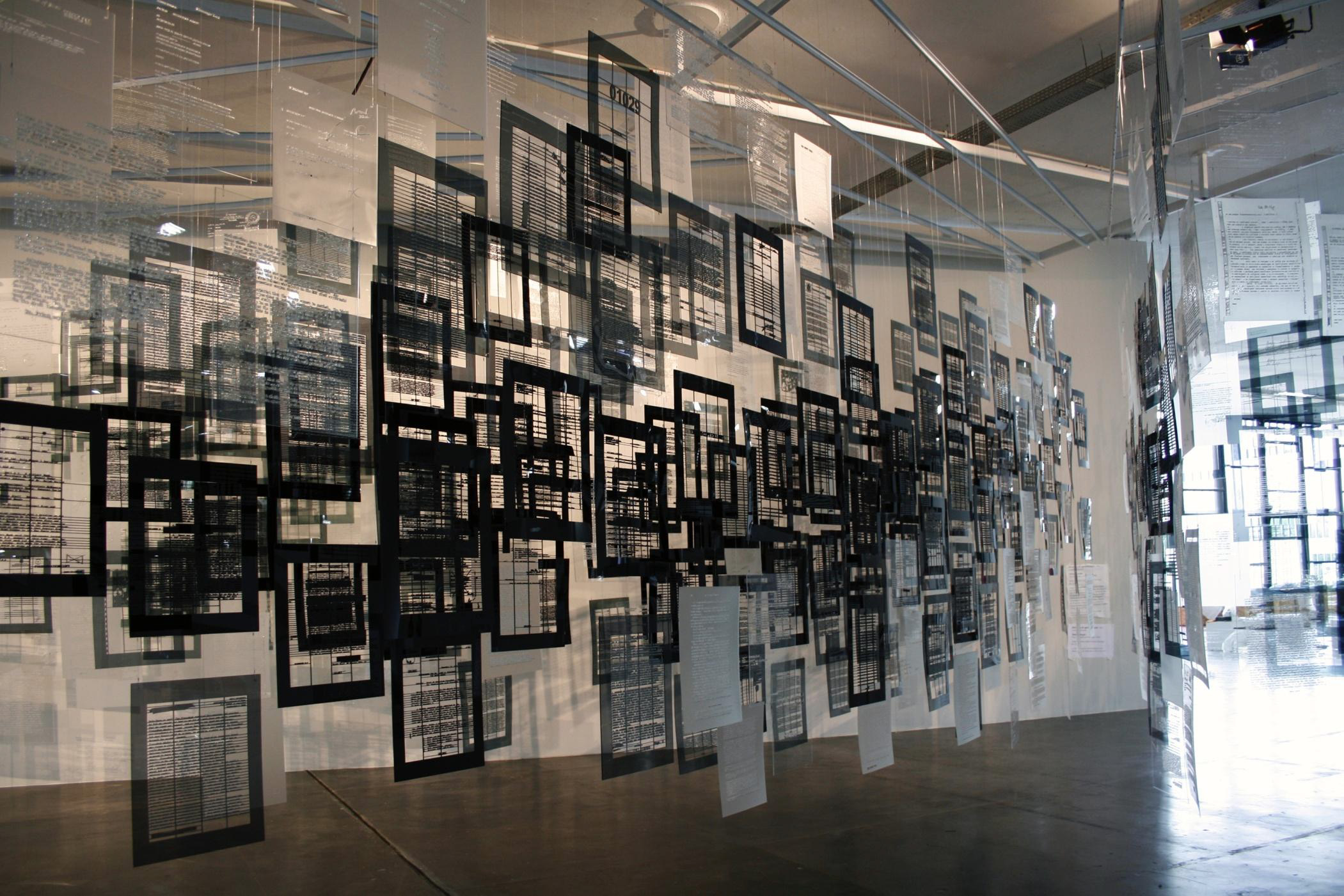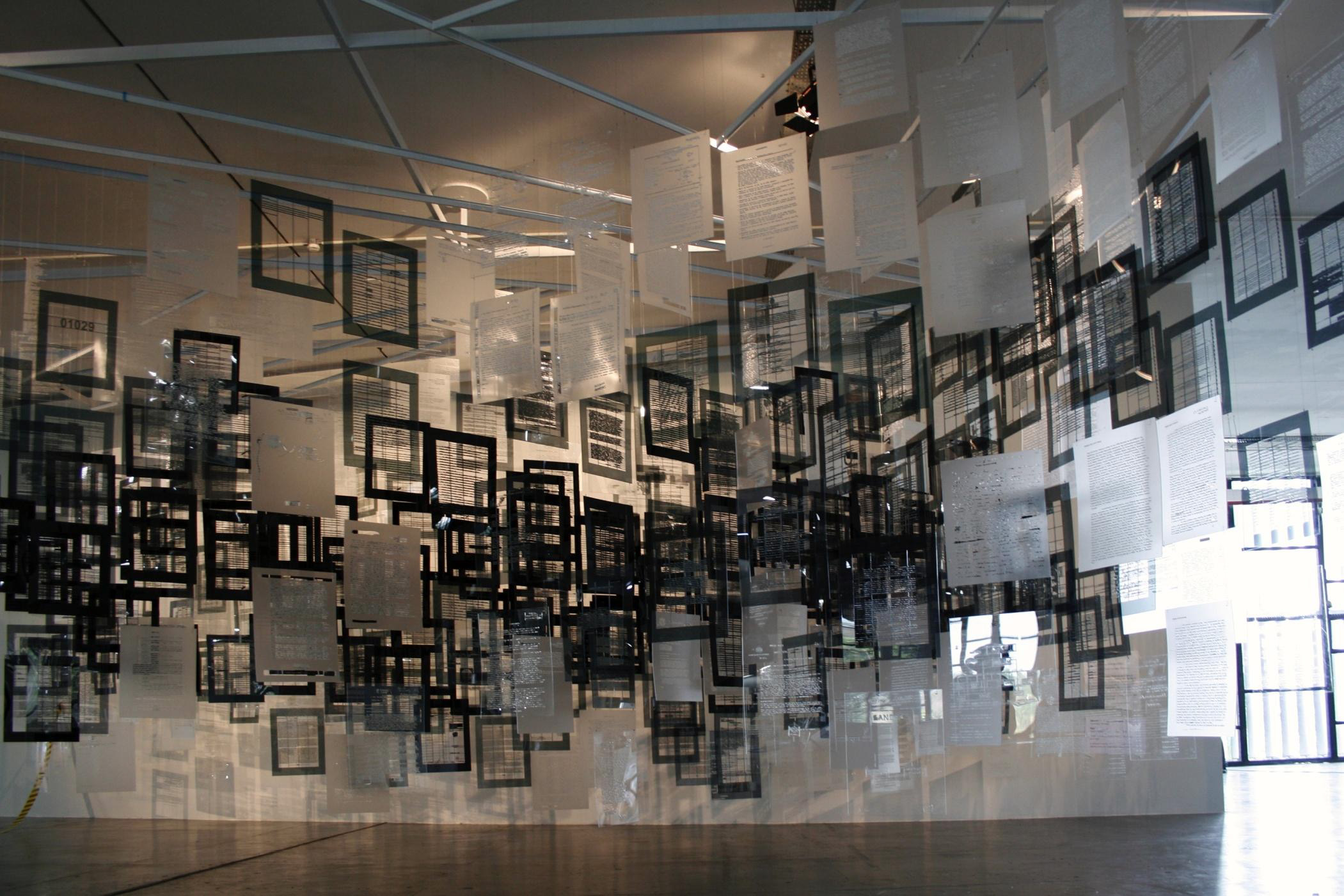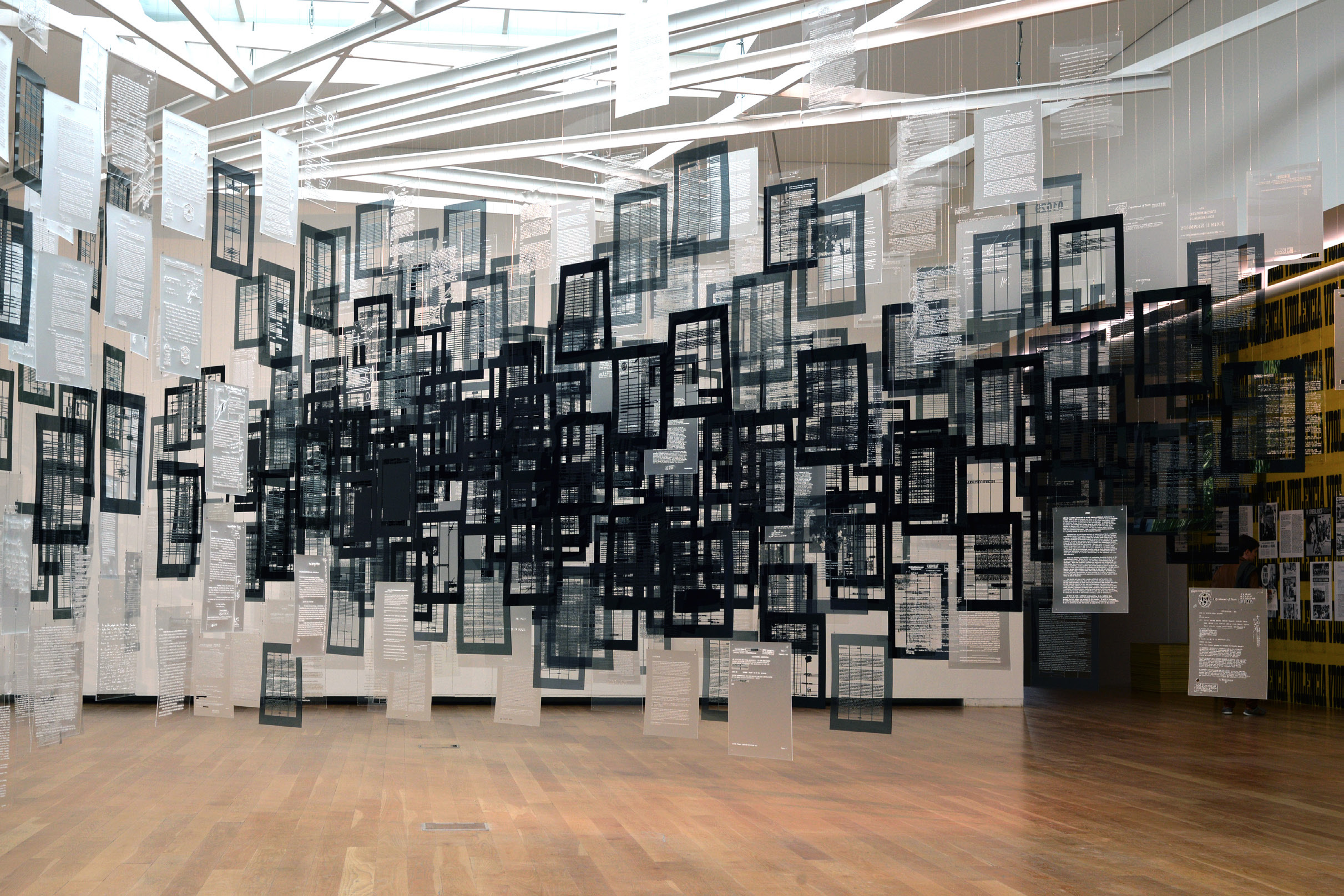
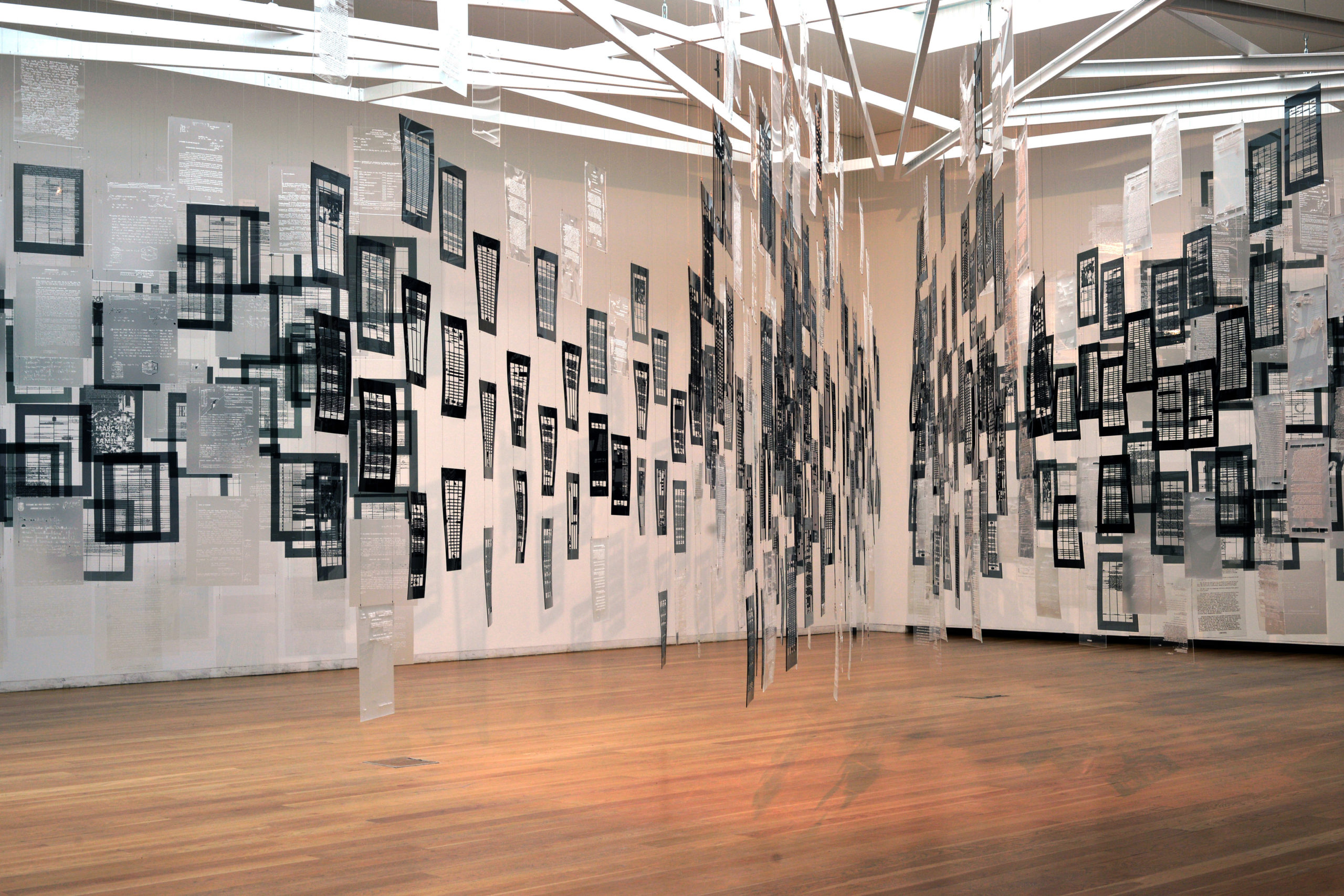
Histórias de Aprendizagem
The work is a volume made by CIA documents on Brazil in relation to the 1964 coup d’état, whose characteristic is that they did not declassify too many documents in proportion to the intervention carried out in this country.
In the volume, CIA documents are intercepted with Brazilian documents from that period, including the government of João Goulart (1961-1964) and up to his death in 1976 in Uruguay, because of Operation Condor. The volume is shaped by the intertwining of these two forces – U.S. intervention and administration of the coup from Brazilian and South American intelligence agencies, practices that would later expand to the rest of the Latin American continent.
An aesthetic characteristic of the volume is that its angular shape makes the files in the foreground disappear and those in the background come into view, and, due to the laser cut, the 520 documents are transparent
and superimposed on each other. The objective of the work Histórias de Aprendizajem is that two issues are perceived regarding history and how we live it:
The first is that we are all immersed in an unknown history, because the basis of power is that we cannot be aware of the dimension of this plot. In the work this is contained in the size, the volume, the “chaotic” disposition of the elements and the body’s journey through it. As it is made up of archives that were secret or not publicly accessible, the work confers and draws the volumetry of that dimension.
The second objective is that you can have certain glimpses, partial fragments that locate you in relation to the information, but with the difficulty of scale and the impossibility of accessing all this reading. The work proposes a slow reading, it confronts you with censorship and proposes a fragmentary access. The path and the position of the archives with respect to the scale of the body, makes the truth contained in the archives overflow the possibilities of an individual. The impossibility and its exhaustion are something that implies an individual effort but demands a collective work that appeals to history since this is the material that will help to weave it.
The plot of the Brazilian and Latin American coups d’état, appear in a labyrinthine disposition, typical of the archival condition of the documents since they are the only elements that demand to be reviewed to learn new points of connection that question the national histories, their relations with the macro-economic and political powers.
VIDEOS DIFUSIÓN
Visioner TV / Historias de Aprendizaje - Voluspa Jarpa @ 31ª Bienal de Sao Paulo, Brasil.
VIDEOS DIFUSIÓN
Voluspa Jarpa | Vitruvius | 31a Bienal de Arte de São Paulo
VIDEOS DIFUSIÓN
#31bienal (Ações educativas) Voluspa Jarpa: Histórias de Aprendizagem
exhibición:
31ST BIENAL DE SÃO PAULO
“HOW TO (...) THINGS THAT DON’T EXIST”
CURATED BY: CHARLES ESCHE, PABLO LAFUENTE, NURIA ENGUITA MAYO, GALIT EILAT & OREN SAGIV
ASSOCIATE CURATORS: BENJAMIN SEROUSSI & LUIZA PROENÇA
ciudad:
país:
Especificación:
- Histórias de aprendizagem
(Learning Histories)
520 laser-cut acrylic plates, stainless steel cable
